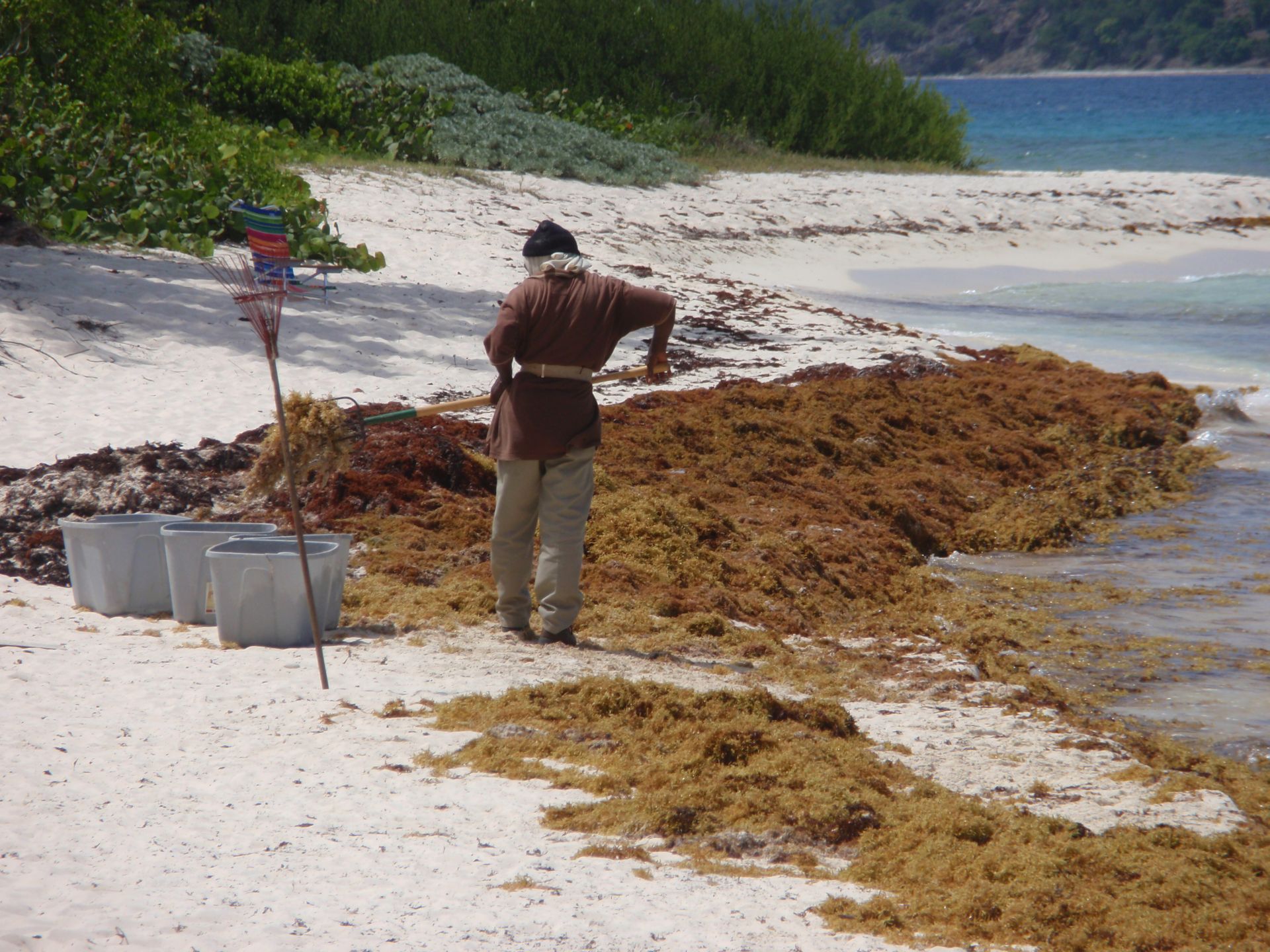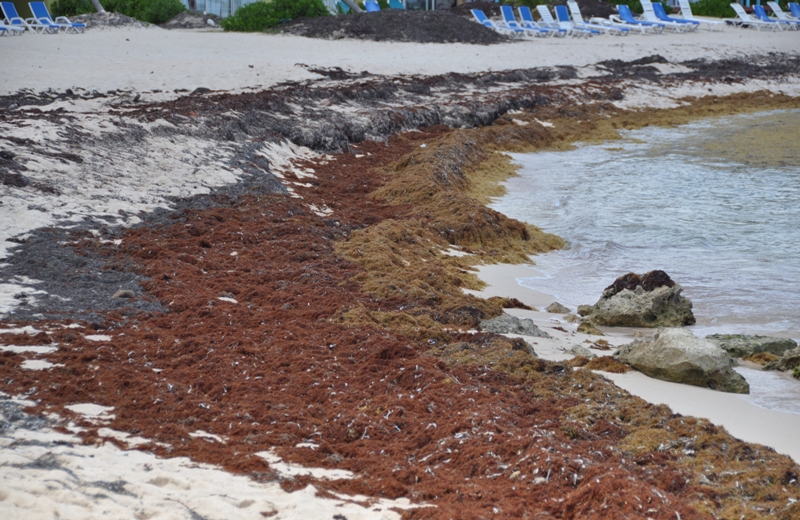
“I came here on vacation, but with Irene and the seaweed, I’m losing precious time,” Colorado resident Jamie Scarborough said.
Every year there is a natural drift from the Sargasso Sea, a two-million-square-mile chunk of the Atlantic Ocean, which stretches from the West Indies to the Azores. However, scientists have been baffled by the sheer amount of Sargussum this year.
According to Laurent Chérubin, a visiting research oceanographer from the University of Miami, scientists don’t fully understand the rise in the seaweed; however, there are two main theories that are currently being studied.
“Either some of ocean circulation has changed radically, or some of the biological cycle in the ocean has been boosted or enhanced in the way that’s not usual,” he said.
Tyler Smith, assistant professor at UVI’s Center for Marine and Environmental Studies, also noted that this is the first time in history that has been heavily documented where such an occurrence is happening. He said that the Windward Islands are getting huge amounts on their shores as well, likely because the wind currents run southwest to northwest.

William Coles, the chief of environmental education at the Fish and Wildlife Division of Planning and Natural Resources, said that he thinks the large bloom is coming from all of the storm activity.
“Large chunks of Sargassum are breaking off, and the winds have pushed them toward the Virgin Islands. However, Coles said the problem is not unique to the territory and that some places in Antigua have Sargassum piled four feet high.
Many V.I. beaches are up to their necks in seaweed, and Smith pointed out “Certain days are getting filled up on the inner shores; it’s coming in off the tip of Water Island and Fish Bay on St. John,” he said.
Lindqvist Beach on St. Thomas is loaded with Sargassum weed, as are the northwest beaches on St. Croix. Hibiscus and Pelican Cove Beaches are plagued with it, and as the Source reported a few weeks ago that Divi Carina Bay Resort and Spa has also been affected.
“We noticed the influx after Emily and thought it was part of a larger disturbance in the North Atlantic. We clean it at 8:30 a.m. and by 9:05 the beach is already completely full again. Customers are complaining through the roof, and I try to explain to them that it’s not the norm, but they don’t care or understand,” said Kevin Jackson, Divi’s assistant general manager.
Both scientists agreed that there are both positive and negative aspects of the seaweed and its effect on the ecosystem. For example, Sargassum provides a huge external source of nutrients and supports the ecosystem. It’s optimal for fish to feed off its organisms, or others, like turtles, to get nutrients. The decomposing weed also releases nutrients for shoreline organisms.
Sargassum weed also plays an important role in life cycles of marine life and is extremely beneficial for young fish and eel. Because it reproduces asexually and without seeds, it can survive for years feeding off its own nutrients and supporting young sea life. It’s especially beneficial during the fall when young sea turtles hatch – they seek refuge among the weed, where they can find both food and shelter from predators.
“On the other hand, fishing lines can get trapped; nets can become irrelevant because the weed gets stuck. Also, because there’s a lot on the beaches and it rots, it can make life unpleasant for tourists. It has an effect on tourism. Ultimately, it can decompose on the reef and smother it, which makes it more of a nuisance,” Chérubin said.
Captain Ben Garcia with Deep Blue Charters said that he has noticed a lot more weed getting hooked on the lines.
“We kind of look for clean spots when we do trolling, and although it hasn’t affected business, it is a nuisance,” he said.
While there doesn’t seem to be much of a short-term solution, a few things can be done to eliminate the smelly weed from the beaches. It has been used as compost and is a viable option for farmers to use because it is organic. Or it can be actively removed, and sent to the landfills.
“It can be raked up and drained of the water. Organisms don’t have the same salinity, so it wouldn’t overwhelm a garden,” Coles said.
One thing is certain, the influx has scientists baffled and there doesn’t seem to be any relief in sight.





